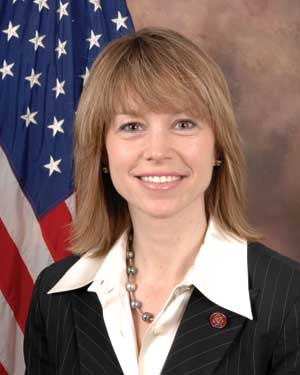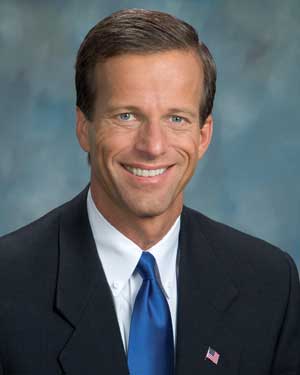Biomass definition may be broadened







January 1, 1970
BY Susanne Retka Schill
Bills to expand the renewable biomass definition in Section 201 of the Energy Independence & Security Act of 2007 have been introduced in the U.S. House and Senate by respective members of the South Dakota congressional delegation.
U.S. Sen. John Thune, R-S.D., introduced Senate Bill 2558 on Jan. 25, which would revert the definition of "renewable biomass" to a broader definition that received widespread support when the Senate version of the energy bill was passed last year. The final law changed the definition of renewable fuel feedstocks to limit the crops and crop residues to those grown on land cleared or cultivated prior to the EISA that is either actively managed or fallow, and non-forested.
Rep. Stephanie Herseth Sandlin, D-S.D., introduced the Renewable Biofuels Facilitation Act in the House on Feb. 7 to amend the EISA to promote the use of energy from waste
products gathered on federal land. Her bill was cosponsored by a geographically diverse and bipartisan group. The Renewable Biofuels Facilitation Act would change the definition to clarify that federally sourced biomass is eligible for consideration under the renewable fuels standard (RFS) and is identical to the language included in the Senate's current version of the farm bill. Additionally, the bill would allow RFS credit for broad categories of biomass from nonfederal and tribal lands, including agricultural commodities, plants and trees, algae, crop residue, waste material (including wood waste and wood residues), animal waste and byproducts (including fats, oils, greases and manure), construction waste, and food and yard waste.
In testimony before the Senate Energy and Natural Resources Committee, Executive Director of the Environmental and Energy Study Institute Carol Werner said the exclusion of any thinning or residues from federal forestland eliminates an opportunity to support hazardous fuels reduction, and reduces the number and amount of cellulosic feedstocks for renewable fuels production. "This could shatter the hopes of many communities in rural areas that wish to rid themselves of such excess materials and at the same time create job opportunities," Werner told the committee. Public and private forests cover approximately one-third of the nation's land area, and much of that acreage is in need of thinning through a variety of sustainable forestry management practices, the EESI director explained.
At the same hearing, U.S. DOE Assistant Secretary for Energy Efficiency and Renewable Energy Andy Karsner also recommended that the definition of woody biomass in the EISA be modified to parallel the definition contained in the farm bill proposal.
U.S. Sen. John Thune, R-S.D., introduced Senate Bill 2558 on Jan. 25, which would revert the definition of "renewable biomass" to a broader definition that received widespread support when the Senate version of the energy bill was passed last year. The final law changed the definition of renewable fuel feedstocks to limit the crops and crop residues to those grown on land cleared or cultivated prior to the EISA that is either actively managed or fallow, and non-forested.
Rep. Stephanie Herseth Sandlin, D-S.D., introduced the Renewable Biofuels Facilitation Act in the House on Feb. 7 to amend the EISA to promote the use of energy from waste
products gathered on federal land. Her bill was cosponsored by a geographically diverse and bipartisan group. The Renewable Biofuels Facilitation Act would change the definition to clarify that federally sourced biomass is eligible for consideration under the renewable fuels standard (RFS) and is identical to the language included in the Senate's current version of the farm bill. Additionally, the bill would allow RFS credit for broad categories of biomass from nonfederal and tribal lands, including agricultural commodities, plants and trees, algae, crop residue, waste material (including wood waste and wood residues), animal waste and byproducts (including fats, oils, greases and manure), construction waste, and food and yard waste.
In testimony before the Senate Energy and Natural Resources Committee, Executive Director of the Environmental and Energy Study Institute Carol Werner said the exclusion of any thinning or residues from federal forestland eliminates an opportunity to support hazardous fuels reduction, and reduces the number and amount of cellulosic feedstocks for renewable fuels production. "This could shatter the hopes of many communities in rural areas that wish to rid themselves of such excess materials and at the same time create job opportunities," Werner told the committee. Public and private forests cover approximately one-third of the nation's land area, and much of that acreage is in need of thinning through a variety of sustainable forestry management practices, the EESI director explained.
At the same hearing, U.S. DOE Assistant Secretary for Energy Efficiency and Renewable Energy Andy Karsner also recommended that the definition of woody biomass in the EISA be modified to parallel the definition contained in the farm bill proposal.
Advertisement
Advertisement
Upcoming Events





